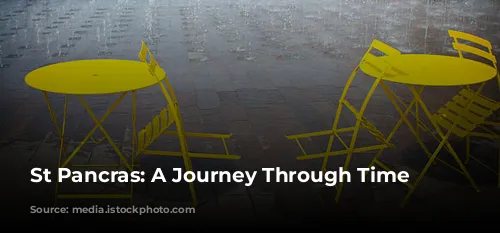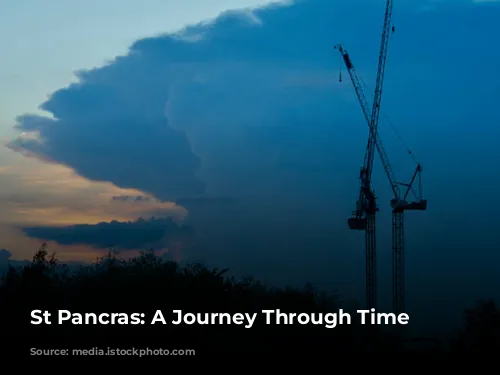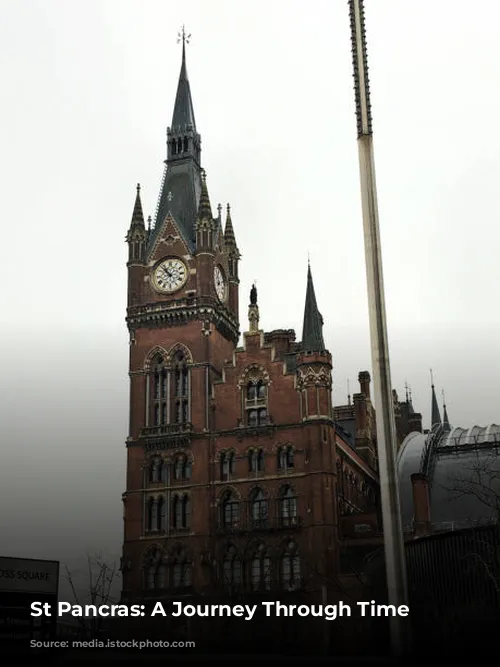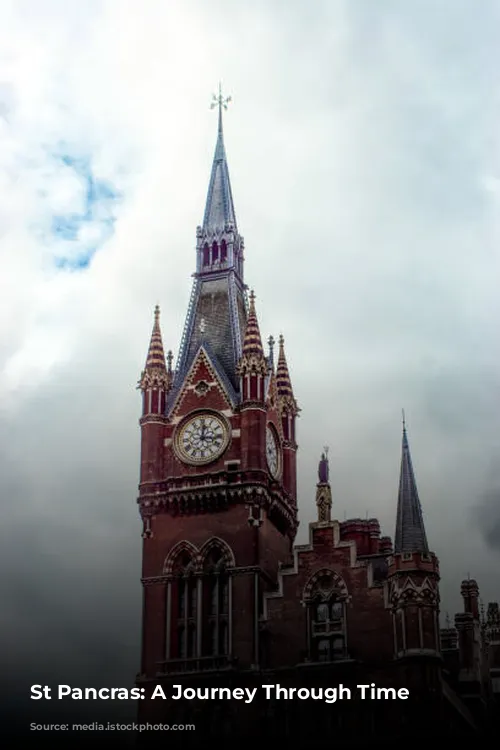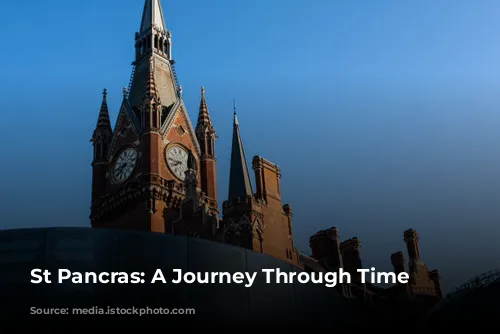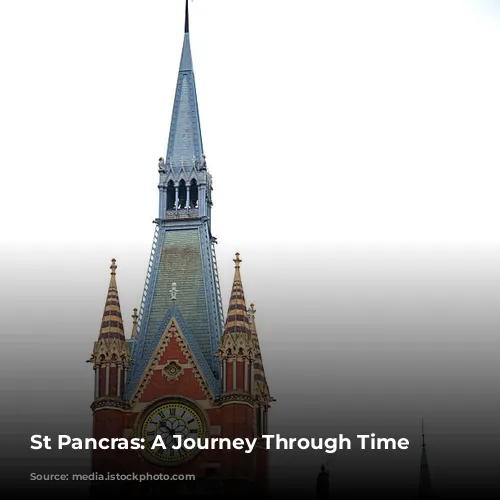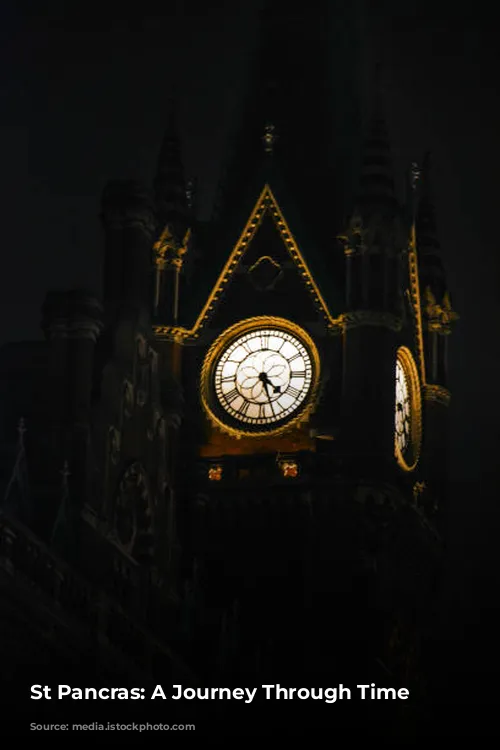St Pancras Station, a stunning architectural marvel, stands as a testament to the grandeur of Victorian engineering. It’s a place where history intertwines with the present, offering a glimpse into the past through its intricate details and remarkable stories.
Let’s embark on a journey, exploring this iconic landmark and uncovering the hidden tales within its walls.
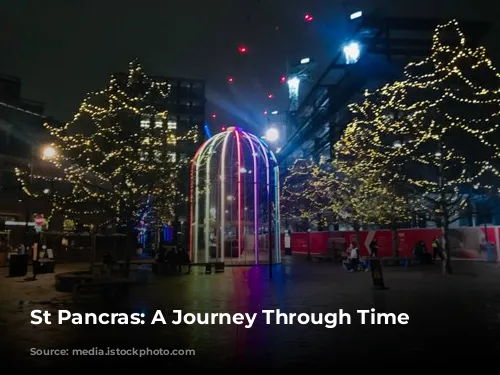
Entering St Pancras
For those who didn’t arrive through the hotel, you can access the station through its impressive public entrance, a grand archway leading onto the Grand Terrace. This entrance, with its breathtaking views, is a worthy alternative to the hotel entrance. It places you directly before the Eurostar platforms, a gateway to continental Europe.
To the right, you’ll notice The Betjeman Arms, a fitting tribute to the renowned poet and conservationist, Sir John Betjeman. (We’ll delve deeper into his connection to St Pancras later.)
Regardless of your entry point, your journey should start at the “Meeting Place” statue. This magnificent 30-foot-high, 20-ton bronze sculpture often referred to as “The Lovers,” or “Saying Goodbye,” captures the essence of romantic train travel. Created by British sculptor Paul Day, renowned for his unique perspectives, the statue was intended to be romantic, democratic, and iconic. However, it faced criticism from fellow artists, with some deeming it “schmaltzy” and “kitsch.”
Despite the critics, “The Lovers” is a beloved landmark, its charm resonating with countless travelers. The statue beautifully depicts a couple’s farewell before a journey, or a heartfelt reunion after a long separation. Lonely Planet, recognizing the statue’s captivating aura, named St Pancras “one of the most romantic meeting places in the world.”
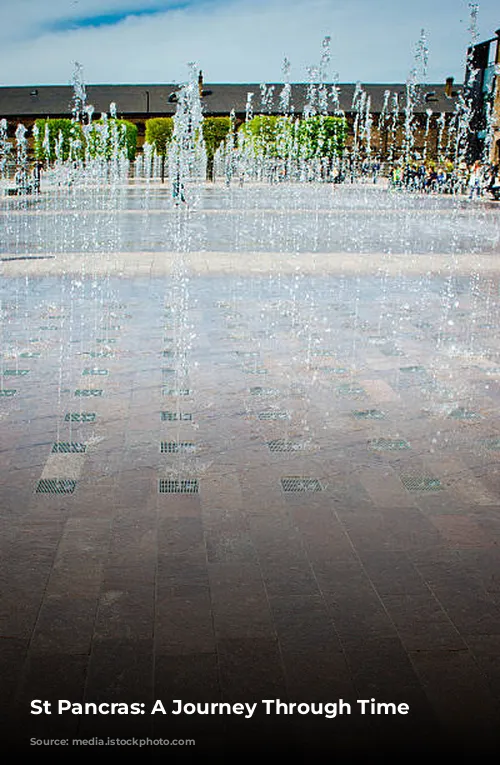
Beneath the Surface: A Beer-Fueled History
St Pancras’s grandeur extends beyond its surface, with a hidden past brimming with fascinating details. Let’s explore the secrets lurking beneath its platforms.
The platforms behind the glass screen are dedicated to Eurostar services. However, they once housed the original Midland Railway services. Why are the platforms elevated? It’s due to the Regent’s Canal, which lies directly behind the station. The Midland Railway engineer, unlike the builders of the neighboring King’s Cross Station, chose to build over the canal instead of running the tracks beneath it. This decision aimed to avoid steep inclines, which would have hindered steam engines, particularly when pulling heavy loads.
This elevation not only facilitated train travel but also added grandeur to the station, visually towering over its neighbor. The “upper level” is supported by a remarkable 850 cast iron columns. Interestingly, the space between these columns perfectly accommodates a beer barrel. This was no coincidence; the station was designed to accommodate a lucrative trade: beer from Burton-on-Trent.
To uncover this hidden history, let’s retrace our steps, heading towards the “Booking Office” doorways leading into the St Pancras Hotel. As we walk, we’ll catch sight of the beginning of the “longest champagne bar in Europe.” Looking down through the glass screens on our right, we can see the lower level, once used for storage, now transformed into shops and cafes.
This area holds a fascinating story – the foundation of St Pancras’s profitability. This “under vault” was a vital storage space for barrels of beer arriving daily from Burton-on-Trent. The Midland Railway, recognizing the enormous potential of this trade, strategically designed the station to accommodate this vital cargo.
The success of Burton-on-Trent beer was a testament to the quality of its water, rich in gypsum. This natural mineral contributed to the distinct, highly sought-after taste of the beer, which, in the 19th century, became London’s favorite drink. The Midland Railway, with its direct line to Burton-on-Trent, played a pivotal role in this burgeoning beer industry, transporting millions of barrels annually.
The station’s freight platforms served as the unloading point for these beer barrels, which were then lowered into the vast storage area by hydraulic lifts. It’s here, close to the present-day location of the Barrel Vault pub, that this bustling beer trade unfolded.
The under vault became a crucial hub for the London beer industry, with sections dedicated to various breweries, notably Bass and Thomas Salt. This efficient system allowed beer to reach London pubs and consumers promptly.
The arrival of rail transportation revolutionized the beer industry. Prior to the railway, beer had been transported via horse-drawn wagons and canals – a slow and costly process. The efficiency of rail transport transformed the industry, enabling the mass production and distribution of Burton-on-Trent beer.
Bass, a prominent brewery in Burton, saw its annual output skyrocket from 30,800 barrels in 1839 to 850,000 barrels in 1879. The introduction of rail transport allowed the once-regional delicacy to become a nationwide sensation.
The beer barrels, once stored beneath the platforms, were then delivered to pubs and customers throughout London using horse-drawn wagons, with dedicated teams handling the loading and unloading. Bass, at one point, had 100 horses stabled at St Pancras, a testament to the scale of its operations.
Later, as breweries began bottling their beers, St Pancras further evolved into a hub for this new industry. Companies like Read Brothers, based in the station’s warehouse, carried out bottling operations, supplying beer to Londoners. Thomas Salt had a dedicated sampling room, allowing wholesalers to savor their selection.
The era of horse-drawn wagons eventually gave way to motorized vehicles. However, the importance of rail transport remained. By the 1950s, while rail traffic had declined to a quarter of its peak, St Pancras continued to be a vital link for the Burton-on-Trent beer industry. Ultimately, in 1964, the “beer by rail” business came to an end, marking the close of a remarkable chapter in St Pancras’s history.
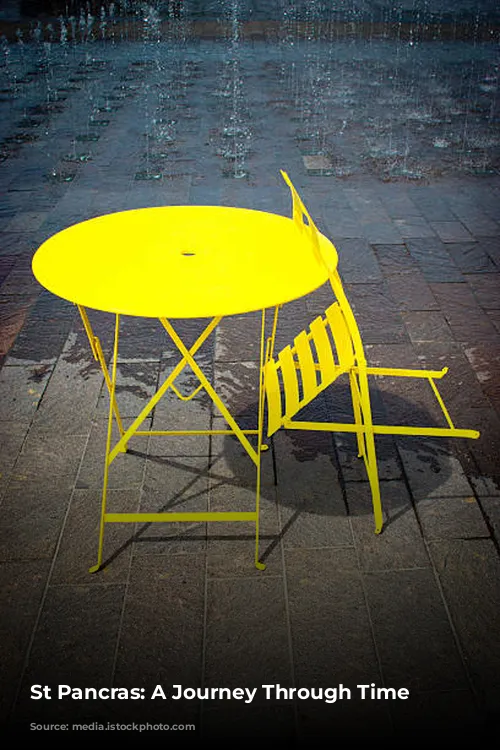
Conclusion
St Pancras, a beacon of architectural brilliance and engineering innovation, offers more than just a railway station. It’s a repository of stories, a window into the past, and a testament to the evolution of London itself. From its grand entrance and the iconic “Meeting Place” statue to the secrets beneath its platforms, St Pancras invites us to explore its rich history and appreciate its enduring legacy. The echoes of past triumphs and innovations still reverberate within its walls, reminding us that this landmark is not merely a station but a living testament to a bygone era.

